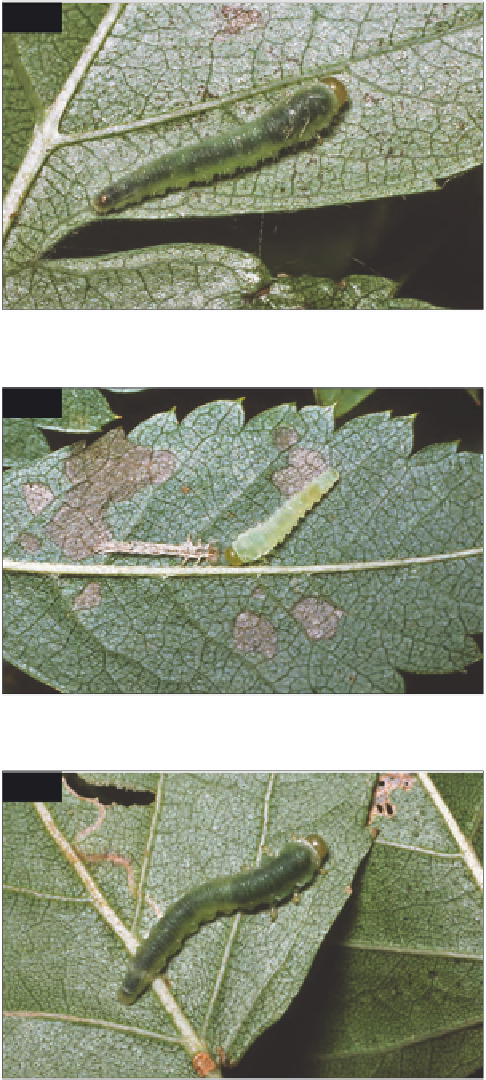Biology Reference
In-Depth Information
971
Dineura stilata
(Klug) (
971
)
A generally common but minor pest of hawthorn
(
Crataegus
), sometimes present on nursery stock and
garden hedges. Widely distributed throughout central
and northern Europe.
DESCRIPTION
Adult:
5-6 mm long; head black; thorax black, with
reddish marks; abdomen black and yellow, and
relatively narrow; legs yellowish.
Larva:
up to 14 mm
long; head yellowish green; body green, semi-
translucent, slightly flattened and distinctly tapered
from front to rear; head and body bear short, whitish
hairs.
971
Larva of
Dineura stilata
.
972
LIFE HISTORY
The larvae feed on hawthorn from August to October,
lying pressed flat against the leaf surface. They often
occur in small groups, typically browsing away the
upper epidermis and leaving the lower surface intact.
When fully fed, larvae enter the soil, to spin single-
walled cocoons; individuals pupate in the following
spring. Adults emerge in late May or June.
DAMAGE
Infested leaves become noticeably discoloured where
the upper epidermis is removed but damage has no
effect on plant growth.
972
Recently moulted larva of
Dineura testaceipes
.
Dineura testaceipes
(Klug) (
972
)
A widespread pest of rowan (
Sorbus aucuparia
), the
light green larvae feeding on the leaves during the
summer months. Minor infestations sometimes occur on
ornamental trees, the leaves being disfigured by pale
patches, but the insect is more numerous on wild hosts.
973
Dineura viridorsata
(Retsius in Degeer) (
973
)
Although most abundant in birch woods, this widely
distributed sawfly is also a common pest of ornamental
and amenity birch (
Betula
) trees. The larvae (
c.
16 mm
long when fully grown) are greenish white, tapered and
flattened, with a brownish head. They rest during the
daytime on the underside of leaves, where the cast
skins of earlier instars are often present. Feeding takes
place at night, the larvae removing the upper epidermis
of the leaves to produce distinct whitish blotches; such
damage is often extensive but is of little or no
significance. When fully grown, larvae enter the soil to
overwinter in black, thin-walled cocoons. Larvae pupate
in the spring. Adults occur in late May or June. They are
5-8 mm long and mainly black with a yellow abdomen.
973
Larva of
Dineura viridorsata
.

Search WWH ::

Custom Search